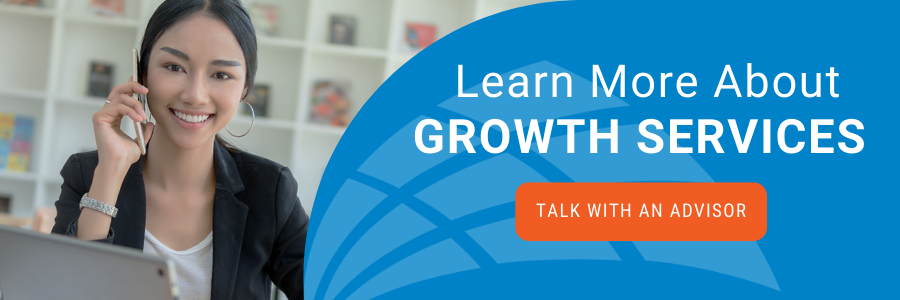MARKETING GROWTH SERVICES:
MAPPING YOUR BUYERS’ JOURNEY

Understanding your buyers’ journey shapes how you interact with your customers
Understanding your buyers' journey not only influences how you interact with them, it also dictates your approach to sales and content marketing.
So, what is a buyer journey? And why is it important to match your approach to your contact's stage in their journey? That's what we'll answer in this post.
Table of Contents:
- What the Buyers' Journey Is and Why It's Important
- Challenges Solved by Understanding the Buyer Journey
- Where Are Customers in Their Journey?
Key Takeaways:
- The “buyer journey” or “customer journey” describes the steps a customer takes before making a purchase.
- Main phases of a buyer journey include awareness, consideration, and decision.
- Using sales tactics or delivering content that's designed for a different stage in the journey can lead to customers losing interest in your product.
- Matching your content and communications with the buyer's stage in their journey increases engagement and positions your company as a trusted partner.
What the Buyers' Journey Is and Why It's Important
A buyer journey (also called “customer journey”) describes the process a person takes to make a purchase decision. In most cases – B2B or B2C – the person goes through three distinct phases:
- Awareness. They know they have a problem to solve.
- Consideration. They know what the problem is, and they're looking for ways to solve it.
- Decision. They've taken in the facts and chosen a course of action. They're ready to solve their problem – hopefully by doing business with your company.
One of the first things to notice about a customer journey is that it focuses on the customer. It's not about what the seller needs to communicate; it's about how the seller can help the customer at that particular moment. The customer's needs take priority.
With this in mind, it's easier to see why understanding the buyer journey is so important: Providing information that's geared for the decision phase won't help a contact that's still struggling to understand the problem. Sharing data that's suited for the consideration phase will frustrate the person that's arrived at their decision; it's a waste of their time.
But if you can supply people with information that's designed for their current stage in the customer journey, you're not just helping them. You're establishing your company as a knowledgeable and trusted partner that cares about helping them solve their problem.
This leads to our next question: How can you tell what stage of the customer journey each contact is in?
Where Are Customers in Their Journey?
There's a simple way to tell where customers are in their journey: Listen to them and observe their actions.
Someone in the awareness stage will primarily be looking for information. They may not have fully defined what's causing the problem yet. In this stage, your goal is to help them understand the problem. Blog posts, whitepapers, social media posts, educational webinars or videos, and online articles are all classic venues for awareness-stage content. (This post is an example of content that's geared towards the awareness stage.)
In the consideration stage, the person has fully understood their problem. They've moved on to evaluating a solution. In this stage, your goal is to explain potential fixes in more depth. You can do this using case studies, product comparisons, and guides. In written content, you should include clear calls to action, making it easier for customers to move toward the final stage in their buyer's journey.
In the decision stage, the person is ready to talk details. You can use demonstrations and free trials to encourage them to finally take that last step and complete a purchase; depending on your business, you may consider using discounts or perks to sweeten the deal. Testimonials from satisfied customers, pricing guides, configurators, and other sales content are also highly useful here.
Up Next: Using Content to Attract & Engage Your Clients
You've probably noticed that there's a strong relationship between the buyer journey and effective content. In our next post, we'll discuss how you can use content to attract and engage customers. See you then!

